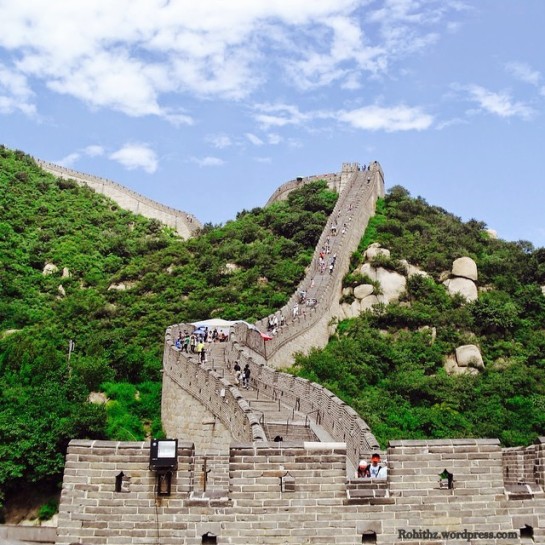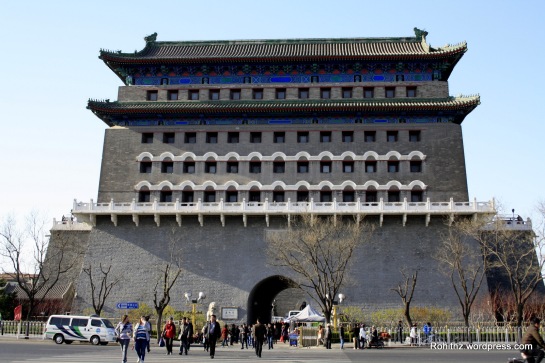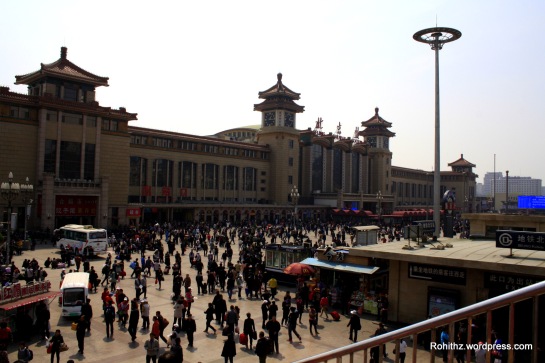When I was a kid, I heard that “One never reaches home, but wherever friendly paths intersect the whole world looks like home for a time.” I totally echo with this statement. After Changchun, Beijing is my 2nd home in China. Whenever I get Vacations, I used to go to Beijing to spend my vacations to hang out with my friends. With the love and affection of my friends Emily jiang, Zhiqin zhou and Haijun yang families, I never thought I was in a different place. I am more familiar with the roads and streets of Beijing than any other city(not even my home town :p ). In this particular post I wanna recollect all those nostalgic memories.

Night is to see the dreams and day is to make them true. So its good to sleep now and see the dreams.

Great Wall of china- Changcheng长城 one of the world wonder… I’m lucky that I visited this wonder in all the 3 seasons.. 2008 Winter, 2010 Summer & 2012 Spring.. Every time I visit this a new memory pops-up. This mighty wall is seen from space: Based on the photograph taken by leroy chiao an American-Chinese astronaut, the China Daily later reported that the Great Wall can be seen from ‘space’ with the naked eye, under favorable viewing conditions, if one knows exactly where to look.

Near Mao’s Mausoleum, I saw this imposing gate which was quite impressive. So, I walked closer and then read about this on my travel across china book then I got to know that how important this gate is to the city. So I decided to go in and have a closer look. Apparently this gate is considered the Front Gate to Beijing in those olden days. Officially, this is called Zhengyangmen but it is more known as Qianmen which mean the Front Gate. When Beijing was established as the capital of China, they build a wall around the city for protection. The Inner City was totally surrounded by a wall and access into the city is through 9 gates. The wall stood for almost 600 years. The saddest part is that about 50 years ago, they … tore down the city walls! It is such a crazy thing to destroy something of such historic significance. But it was in those days of the Communist rule that was bent on destroying the past so that they can look to the future, something called the Cultural Revolution. In place of these walls, there are now wide ring roads and subways .

The Beijing Railway Station(北京火车站):Is the first-rate important railway in China running mainly long-haul journeys, it is honored to be the greeting gate of the nation. Built in 1901, it covers an area of nearly 72 acres. It is opened in 1959 and was the largest train station in China at the time. Though superseded by the larger Beijing West and Beijing South Stations, this station remains the only one.

Zhengyangmen gate was first built in 1419 during the Ming Dynasty and once consisted of the gatehouse proper and a archery tower, which were connected by side walls and together with side gates, formed a large barbican. The gate guarded the direct entry into the imperial city. The city’s first railway station known as the Qianmen Station, was built just outside the gate. During the Boxer Rebellion of 1900, the gate sustained considerable damage when the Eight-Nation Alliance invaded the city. The gate complex was extensively reconstructed in 1914. The Barbican side gates were torn down in 1915.

Qianmen Dajie is a recently restored pedestrian street in the architectural style of old Peking with little shops & restaurants. Connected to Qianmen, the Dashilar area is a vibrant mix of historic shops and hutong streets.

Qianmen avenue is a 570 year old pedestrian market. Infact this has many craftsman workshops, warehouses and theatres in the Hutongs nearby. Without a visit to this place, your trip to Beijing would be incomplete..

